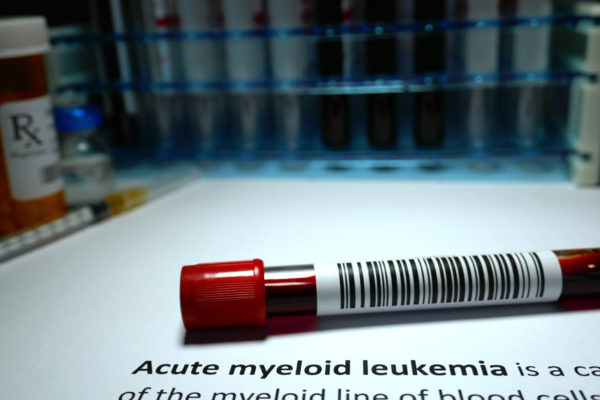
Somatic IDH2 (isocitrate dehydrogenase-2) mutations are present in 8-20% of patients with acute myeloid leukaemia (AML). According to the results of a phase 3 trial published in Blood, the IDH2 inhibitor enasidenib provides clinical benefits in heavily pretreated older IDH2-mutant R/R AML patients, compared to the conventional care regimen.
Acute myeloid leukaemia (AML) is a heterogeneous hematologic malignancy that occurs primarily in older individuals. Prognosis is poor for patients with relapsed or refractory (R/R) AML, and treatment outcomes worsen with each subsequent AML salvage therapy. Somatic IDH2 (isocitrate dehydrogenase-2) mutations are noted in approximately 8% to 20% of patients with AML and are associated with the development of the disease. Based on the promising results of a phase 1/2 trial, the IDH2 inhibitor enasidenib was approved by the FDA to treat adult patients with IDH2-mutant R/R AML. Following this, a randomised phase 3 trial was conducted by scientists at the Gustave Roussy cancer hospital in Villejuif, France, to evaluate the efficacy and safety of enasidenib versus conventional care regimens (CCRs) in older patients with late-stage, heavily pretreated IDH2-mutant R/R AML.
This phase 3 trial enrolled patients ≥60 years with late-stage IDH2-mutant AML who were relapsed/refractory to two or three prior AML-directed therapies. Patients were first pre-assigned to a CCR (i.e., azacitidine, intermediate-dose cytarabine, low-dose cytarabine, or supportive care) and then randomised (1:1) to enasidenib 100 mg per day (n = 158) or CCR (n = 161). Patients randomised to CCR received their preselected CCR option. The primary endpoint was overall survival (OS). Secondary endpoints included event-free survival (EFS), time to treatment failure (TTF), overall response rate (ORR), hematologic improvement (HI), and transfusion independence (TI).
The primary endpoint OS was not met, with a median OS for enasidenib and CCR of 6.5 and 6.2 months, respectively (HR: 0.86; p = 0.23). Nevertheless, the proportion of patients alive at one year was >10% higher in the enasidenib arm than in the CCR arm (37.5% vs. 26.1%). Of note, 12% of patients in the CCR arm received enasidenib as subsequent therapy during OS follow-up, which likely confounded the evaluation of relative treatment effects on OS. In addition to this, enasidenib meaningfully improved the EFS (4.9 vs. 2.6 months; HR: 0.68; p = 0.008), TTF (4.9 vs. 1.9 months; HR: 0.53; p <0.001), ORR (40.5% vs. 9.9%, p <0.001), HI (42.4% vs. 11.2%), and red blood cell-TI (31.7% vs. 9.3%) compared to CCR. The safety of enasidenib was consistent with earlier reports with this agent. No significant difference was observed in the rates of treatment-related grade ≥3 adverse events. Only blood bilirubin was notably increased with enasidenib compared to CCR (19.7 vs. 0.7%).
In conclusion, although this trial did not meet its primary endpoint, it does indicate that enasidenib provides meaningful benefits in EFS, TTF, ORR, HI, and RBC-TI over CCR in this heavily pretreated older IDH2-mutant R/R AML population. These findings support enasidenib as an appropriate oral treatment for patients with mutant-IDH2 R/R AML.